- Home
- Equipment Reviews
-
Amplification Digital Integrated Mono Block Preamplifier Phono Solid State Tube Analog Sources Cartridges Tape Tone Arms Turn Tables Digital Sources Digital Disc Players DACs Music Servers Streaming Music Services
-
Accessories Power Conditioners Room Accoustics Racks & Stands Audio Software Other iPod iPod Speakers iPod Headphones iPod Transports Headphones Over Ear On Ear In Ear Headphone Amplifier
-
- Audio News
- Event Reports
- California Audio Show, San Francisco
- Consumer Electronics Show
- T.H.E. Show
- Rocky Mountain Audio Fest
- AXPONA
- Salon Son & Image
- Hi-Fi Show & AV Expo
- High End
- Lone Star Audio Fest
- Capital Audio Fest
- TAVES - Toronto Audio Video Entertainment Show
- AK Fest
- Home Entertainment Show
- New York Audio $ AV Show
- Open House Events
- Spotlight
- Music
- The Columns
- 2024 California Audio Show
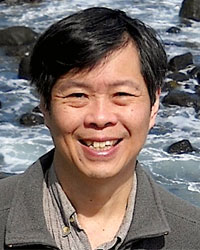
Paul Mah
Reviewer (INACTIVE)Greetings from Noo Yawk City! I consider myself a Noo Yawker even though I was born in Hong Kong. My parents decided to move to the United States when I was four and a half years old. As an afterthought they decided to take me with them. I’m glad they did. Otherwise, I would have become a street urchin (nee Picaro) and may never have had the opportunity to indulge in the finer things in life, like eating fresh food and sleeping in the same bed every night. Growing up in one of the most exciting and energetic cities in the world allowed me to satisfy my curiosity. I indulged in just about everything the city has to offer, which was detrimental to my formal education since I played hooky from school a lot. I started to enjoy listening to music on my little transistor radio when I about ten years old. I still enjoy listening to transistor radios and will exclusively review high end units for Dagogo. I’m just kidding. During my teenage years my fist stereo was a Scott unit which had a drop down record player and speakers that swung open from its hinges. My older brother started me toward what was then high end audio. He owned McIntosh, Harmon Kardon and AR components at the time. I blame him for leading me on the road to financial ruin. But boy, what a sound revelation! My brother helped me put together a system comprising of a Dynaco preamp and amplifier, KLH speakers and a Dual turntable. Memories anyone? I sold a lot of newspapers and held other part-time jobs after school in order to afford it. I enjoyed that system for a number of years, but then life got in the way of my audio hobby. I did very little listening when I attended Joe’s Barber College (aka Columbia) and subsequently earned my B.A. in Experimental Psychology (I could swear the monkeys were playing mind games with me) and Master’s degree in Public Administration. I also snuck in a year of law school before deciding I would make a lousy attorney due to my even tempered nature. I worked for the better part of a decade with various NYC agencies, first as a management analyst, then as a budget analyst and lastly in budget supervision. My most challenging, frustrating and rewarding government assignment was working for NYC’s Office of Management and Budget, the controller of the city’s purse strings. My proudest moment working with that city agency was when the NY Times published my ten year capital budget pie chart on the front page. During that time, I met and worked with an audiophile who renewed my interest in all things audio. At that point I was making a decent living and had discretionary money to pursue various interests. For the next dozen years or so, I indulged in owning and listening to many different audio components, while at the same time reading and trying to understand the audio lexicon. I had a particular fondness for British audio and owned models from Creek, Epos, Celestion, ProAc, Arcam, Rotel, Heybrook and the like, though never owned anything NAD. I didn’t stay away from U.S. companies and have owned McIntosh, Superphon, Vandersteen, and Sonographe components as well as others. Around 1997 I started to fulfill my teenage dream of racing automobiles. I started slowly but got a financial boost when I accepted a position in budget management at the non-profit NY Public Library. For a few years I was able to continue indulging in both audio and amateur road racing. But expenses eventually grew faster than my discretionary allowances so I had to choose one over the other. I chose to continue racing since I knew I could always come back to audio. Around 2003 I started to have some health issues which I didn’t resolve until I decided to early retirement in 2006. I’m sure part of the health problem was due to work related stress issues. I also quit racing then when I realized I no longer had the feeling of invincibility, which is typical as one gets older. All of a sudden I had a lot of free time, which I devoted to attending concerts and cultural events, as well as constantly reading to satisfy my inquisitive nature (something I didn’t do much in college or grad school, reading that is). At this time, I also re-entered into the world of audio because of live music. When I was growing up I would attend a few concerts each year, but when I retired early I started to go to more and more concerts. It has gotten to a point where I usually attend from 30 to 50 concerts per year, ranging from classical or orchestral music to folk or hard rock, and in various indoor and outdoor venues. I especially like indie music, but I like almost all kinds of live music. So, I have become a music lover first and foremost. For me, excellent sounding equipment is a means to an end, and that end is hearing the recreation of the emotional impact of a live performance. If you believe that “music stirs the soul,” then we are kindred spirits. It doesn’t matter whether I’m listening at an acoustical or amplified concert. If the performer(s) or performances affect my emotional state in a positive manner, then I judge the event to be a success, irrespective if the sound quality is less than ideal. The ability to create a plausible illusion of a live performance is, and always will be my standard for judging audio equipment. I guess you can call me a right-brain person, as emotions play a large part in my life. It is kind of ironic since my professional career required my left-brain to function on overtime. Can the equipment be able to communicate the essence of music the recording is trying to convey, or evoke the feelings expressed by the musician or singer? It doesn’t matter as much if I hear warts and all, as long as the essence of the music comes through. Of course, I will report about the warts and whether they negatively impact, or have no impact on the musical message. After all, attending a live musical performance isn’t sonically perfect either, often affected by a multitude of factors. I like to write about added value components, those that match or are close to the performance level of more expensive components. I am not an audiophile cheapskate but like most people, it’s nice to get more than one paid for, whether it is actual added value or perceived added value. My reviewing philosophy is to approach a new piece of equipment and listen using a relative standard of neutrality, though my own preference is for a slightly warmer sound. I say relative neutrality because I do not own testing equipment and apparatus for objective measurements. Frankly, I do not care to record whether or not an audio component shows an absolute flat response curve. I let my ears and brain determine whether or not an audio component falls within my subjective definition of relative neutrality. After attending hundreds of concerts (probably close to five hundred in my lifetime), and listening to thousands of audio components, I think I have acquired a good grasp of what it means to be able to hear a fairly neutral sound. By using this subjective standard, readers can determine from this point whether a component is to her/his liking. I do value that a component is capable of producing more or less, the full frequency range (except small monitor speakers). I also believe that sins of omission are better than sins of commission. I value even more that a component produces the proper harmonic textures of instruments and of the human voice. After all, if a piano recording doesn’t sound like the real instrument or sounds like a skeleton of itself (if properly recorded), then there is something fundamentally wrong with the component. On the controversial subject of audio sound-staging, I will review for imaging (image focus, width, depth and height), even though I never hear this type of precise imaging in live music. But since many audiophiles invest a considerable sum to achieve this goal, I feel they deserve to know if a component is able to achieve it. Since becoming a reviewer two years ago (formerly with The Stereo Times), and using a neutral reviewing method, my main audio system has been in flux. I hope to review, like and purchase some pieces to establish a reference system. When not reviewing and for personal listening, I still enjoy listening to my warmer sounding modified Jolida integrated amplifier. My main listening/living room is approximately 18½’ x 14 ½’ x 10’.
Analog Front End Digital Front End Amplification |
Cabling Speakers Headphones |
Home Theater Accessories Room Treatment |
Articles & Reviews

By Paul Mah November 15, 2015

By Paul Mah May 28, 2015

By Paul Mah January 16, 2015

By Paul Mah December 22, 2014

By Paul Mah December 01, 2014

By Paul Mah September 23, 2014

By Paul Mah August 04, 2014

By Paul Mah July 30, 2014

By Paul Mah March 12, 2014

By Paul Mah June 25, 2013
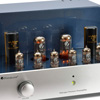
PrimaLuna DiaLogue Premium Preamplifier Review
Preamplifier | 3 Comments »By Paul Mah November 15, 2015
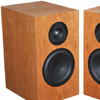
Fritz Carbon 7 SE loudspeaker Review
Bookshelf Speakers | Speakers | No Comments »By Paul Mah May 28, 2015
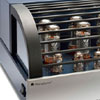
PrimaLuna DiaLogue Premium HP power amplifier Review
Amplification | Tube | 10 Comments »By Paul Mah January 16, 2015
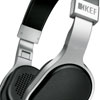
KEF M500 Hi-Fi Headphones Review
Headphones | On Ear Headphones | 7 Comments »By Paul Mah December 22, 2014
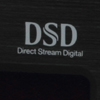
Teac UD-501 USB D/A Converter Review
DACs | Digital Sources | 2 Comments »By Paul Mah December 01, 2014
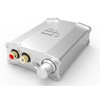
iFi-audio Nano Series – iDSD DAC Review: Part III
DACs | Digital Sources | 3 Comments »By Paul Mah September 23, 2014
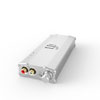
iFi-audio Micro Series – iDAC, iUSBPower Peripherals – iPurifier, Mercury USB cable, and Gemini USB cable Review: Part II
Cables | DACs | Digital Cables | Digital Sources | Power Cables | 8 Comments »By Paul Mah August 04, 2014
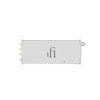
iFi-audio Micro Series – iTube/Pre-amplifier Review: Part I
Preamplifier | 7 Comments »By Paul Mah July 30, 2014
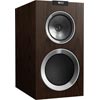
KEF R300 Bookshelf Speaker Review
Bookshelf Speakers | Speakers | 20 Comments »By Paul Mah March 12, 2014
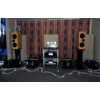
T.H.E. Newport Beach 2013 Audio Show Report
Event Reports | T.H.E. Show | 7 Comments »By Paul Mah June 25, 2013

